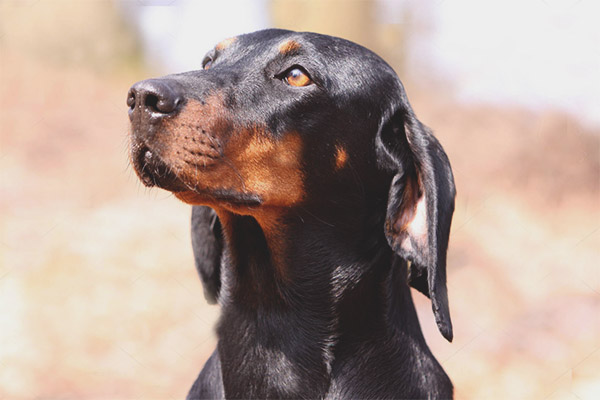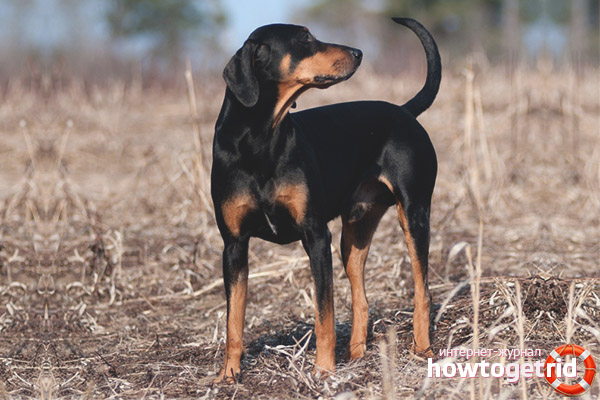The content of the article
Hound created to hunt. But are there many hunters among us? In modern conditions, full of dangers and loneliness, we are looking for a friend and support in the dog. And now - the breed for those who need a friend, perfect in spirit and body, dedicated and physically developed. Watching the fast-paced run, the noble, chiseled silhouette, feeling caring is the real pleasure!
You could hear other names of this breed: Austrian bracke, brandl bracke, smooth coat. In German, it is called "brandlbracke" and is translated as "fire hound."
History of origin
The most common version is this: in ancient times, the Celts lived on the territory of modern Austria. Dogs played an important role in their lives: they helped to hunt, protect property, and even participated in hostilities, and therefore were honored by the tribe.Physically developed and hardy dog was well suited for the Austrian mountainous terrain. It is believed that the Celtic dogs of those times are distant relatives of the modern Austrian hound.
In the XIX century, when hunting becomes a popular entertainment for the elite, this dog is paid attention, because it is hardy, dexterous, and has a beautiful scent. Owning such an animal became a strong advantage for the hunter. As a result, Austrian marriages are beginning to develop as an independent thoroughbred breed (that is, not to mix with others). But she did not immediately become widespread: such hounds were available only to noble persons. Only they had the right to hunt, and it was only possible to hunt on their own lands.
Today, hunting has ceased to be the lot of the elect and does not require noble origin, but the breed has not received widespread distribution. The Austrian Hound is registered with the International Canine Federation and is well known in Austria, but not outside. This is also because this hound loves hunting very much, and it’s impossible to provide her with such an opportunity in urban environments.However, recently interest in this breed is growing, marriages appear in other countries.
Appearance
The dog is medium in size, strong and dense, but not bulky. Height at withers is about 60 cm, average weight - 20 kg. The head is oval, the ears are touchingly hanging down to the very mouth, the tail is thin and long.
The nature of the house and the hunt
The notable hunters of the 19th century seemed to have invested part of their souls in this dog: the Austrian hound is intelligent and restrained. Such dogs were hunted by the pack, and therefore the bracke gets along well with other dogs, even with representatives of other breeds. Suitable for families with small children: this dog is not particularly playful, it is more likely to tolerate games, but it makes good contact.
Everything changes when the dog gets on the hunt.Measured and calm at home, “at work”, the brack becomes persistent, hardy and firm. Here the main advantage of the Austrian hound fully manifests itself - its incomparable scent. A sensitive sense of smell, multiplied by the ability to maintain concentration for a long time, allows this dog to track down prey to the victorious end and to orient well on the terrain.
The dog will perform his duties equally well, regardless of snow, rain or any other external influences. Sometimes such obstinacy becomes a minus: the four-footed hunter is so deeply immersed in the process that he can stop reacting to commands: everything, except the goal, ceases to exist for him. Having caught the prey, the hound is once again transformed: with a loud bark, she makes it clear that the goal has been achieved, and she goes with her head held high. Brandl Brack is most effective in hunting for small animals (rabbits, foxes).
Training, maintenance and care
Obedient at home, brisk on the hunt - if this breed is so beautiful and versatile, then why is it so poorly distributed? It is all about the special needs of the hound, which is difficult to provide in urban environments, namely, a large space for fast running and physical exertion.Going to the nature once a week is not enough: running and loads this dog needs every day. The most suitable conditions are a private house with a fenced courtyard, where marriages can fulfill their needs safely for themselves and those around them. If a dog chases a cat during a walk, then it will be difficult or even impossible to stop it. In the presence of a nearby roadway, such a hunt can end sadly. That is why walks without a leash in urban conditions are not recommended.
Representatives of this breed are worried about the security of their owner, but they do not climb into a fight at the first opportunity, they resort to aggression only in extreme cases.
As for education and training, there is an important nuance. The dog is easily trained, but still quite stubborn (after all, it is necessary for it to hunt), so you need to deal with it carefully, regularly and from an early age. And even under such conditions one should not expect 100% obedience from her.
Dog hygiene is not difficult. It is enough one or two times a week to comb a pet - it’s good that a variety of convenient brushes and mittens are now sold to pet stores.Such a short coat does not need special care, expensive shampoos and frequent combing; and even the molt passes unnoticed. Do not forget to monitor the condition of the teeth, ears, eyes and claws.
Balanced diet
The acquisition of Austrian marriage should be the result of deliberate decisions and good preparation. It is necessary to pick out a cattery: what is his reputation? In what conditions are puppies born and raised? Experienced andResponsible breeders will easily provide you with detailed information about the nursery and its inhabitants.
Video: breed of dogs Austrian hound












To send